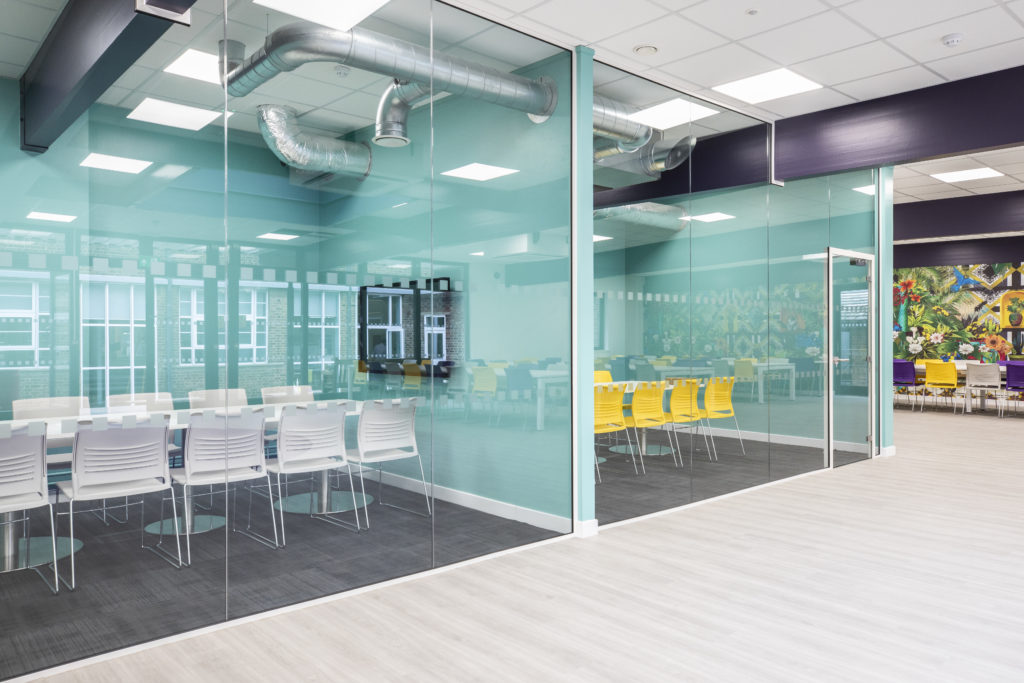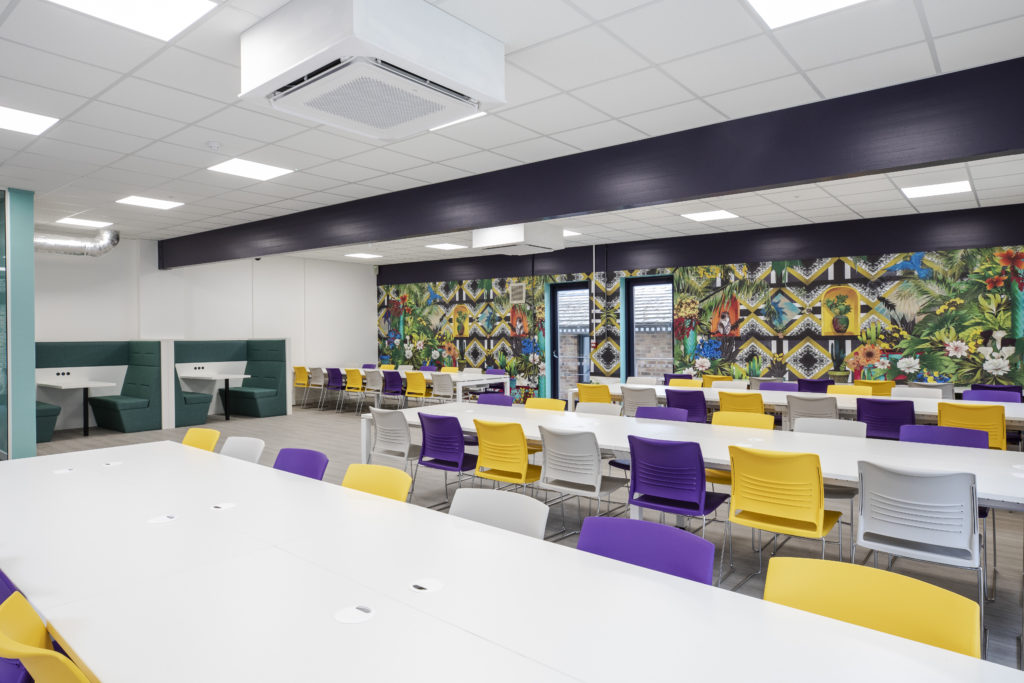The recommended ventilation in dining areas is set at 8 litres per second per person, or 2.5 air changes every hour, whichever is greater.
Paying attention to ventilation within your dining space is of utmost importance.
Extracting the smell of freshly baked food into the surrounding area can also help to increase school dinner take up. Try creating positive atmosphere pressure in any cooking areas adjacent to queues.

Unwanted odours can also be controlled by ensuring that all waste food is properly disposed of, that the space is regularly and thoroughly cleaned – including the furniture and flooring. Refreshing the interior of your dining space regularly will help to ensure that unwanted catering odours are eliminated. Even the best designed dining halls should be reviewed every five to seven years.
Whilst it is important to control the air flow in the space, it is also crucial to make sure that the space is a consistent temperature. The recommended temperature for eating is around 18-19 degrees. Too cool, and you will inhibit the body’s response to feel full, and too warm could lead to an uncomfortable lunchtime.



